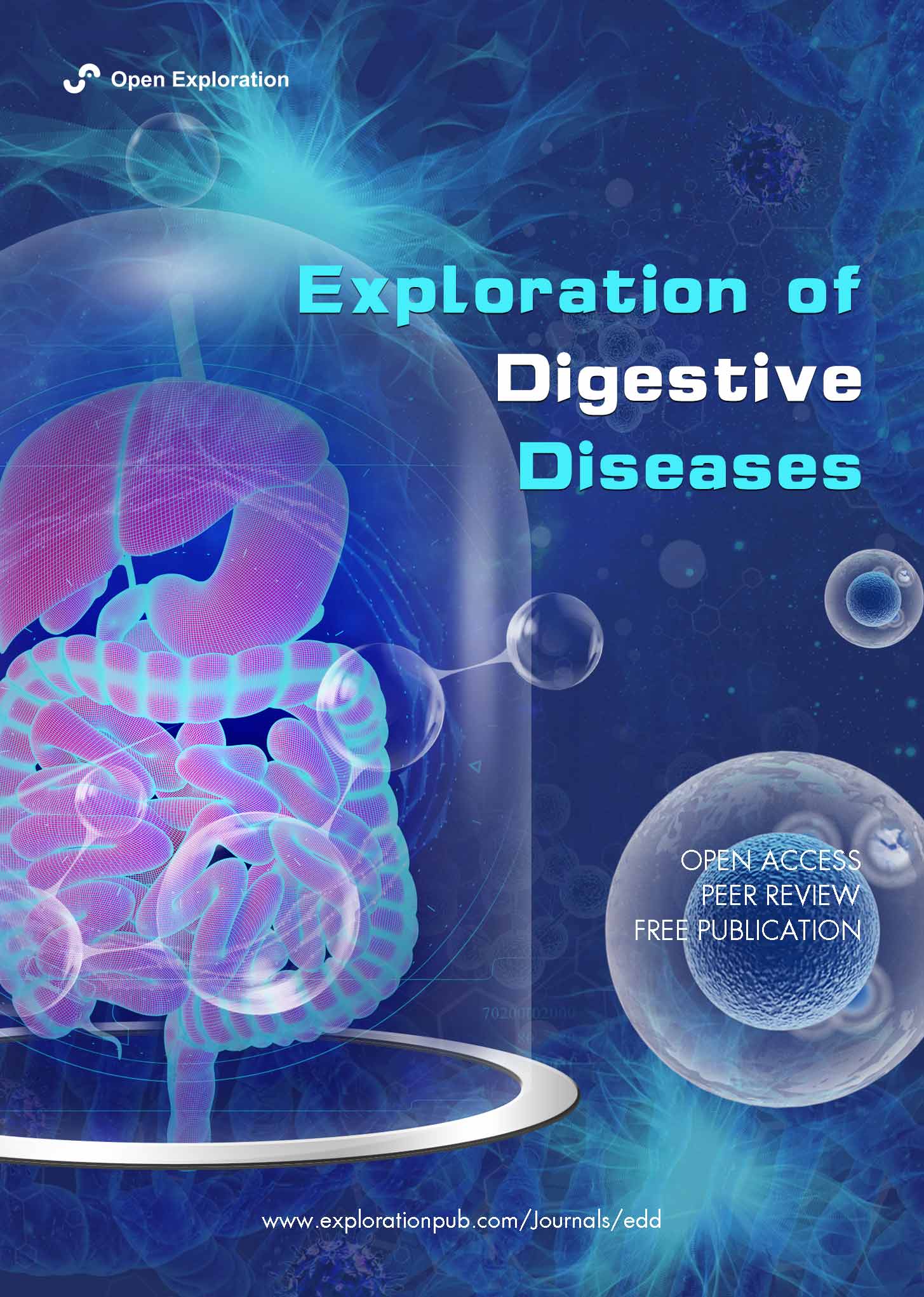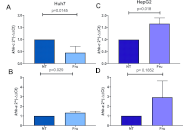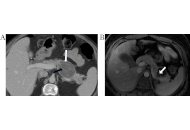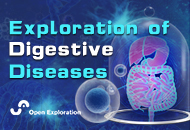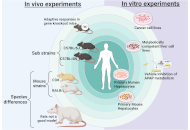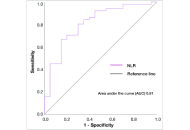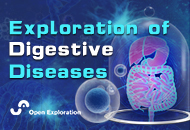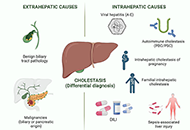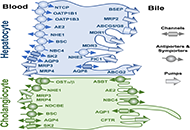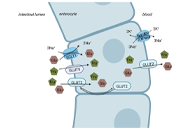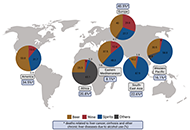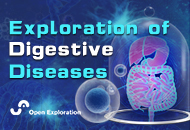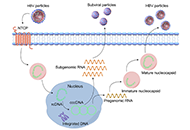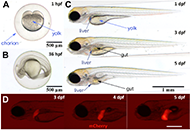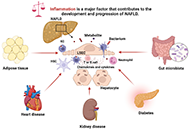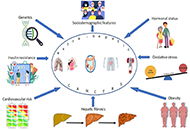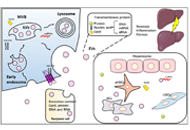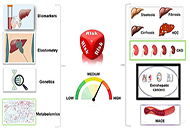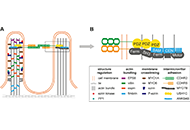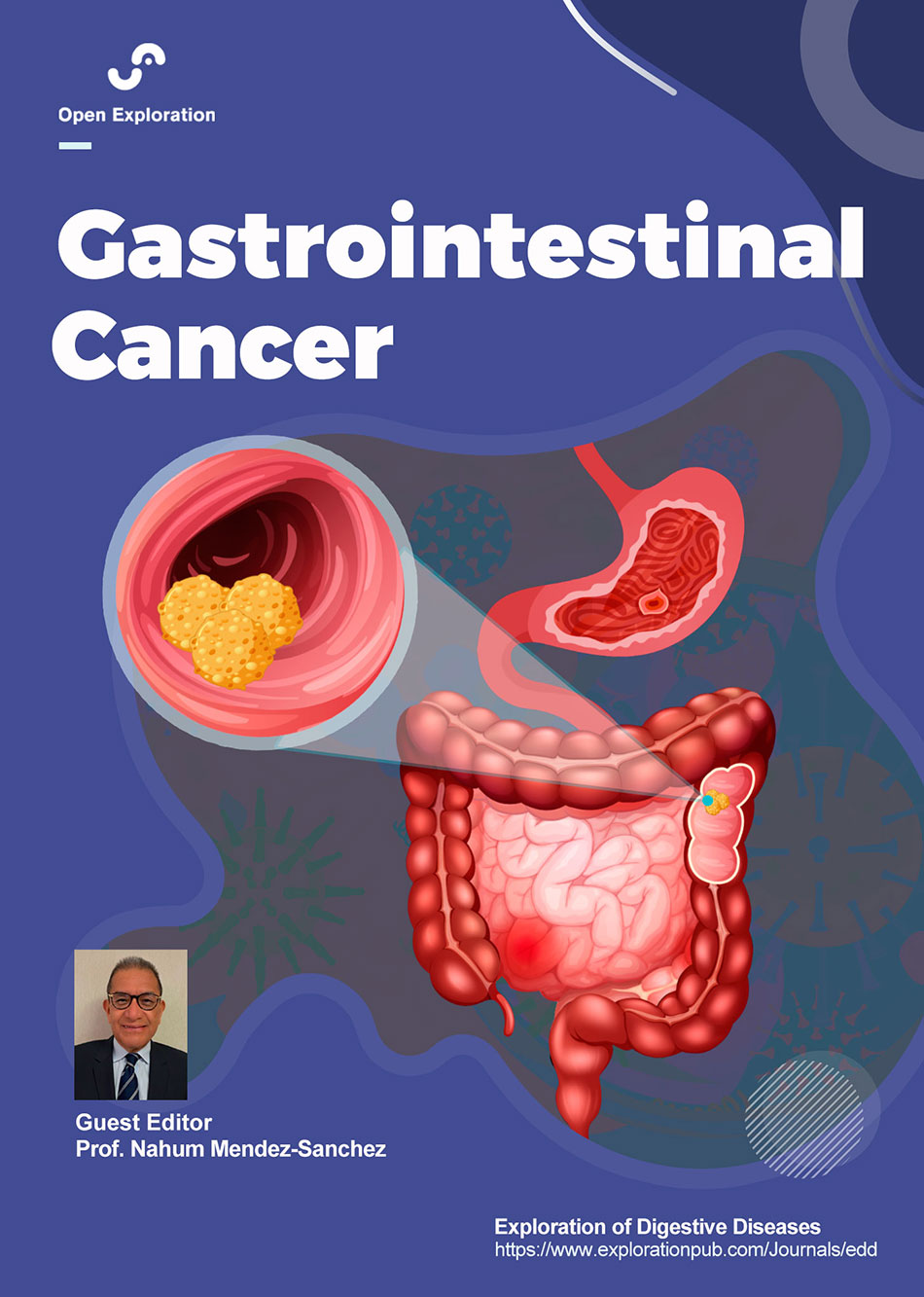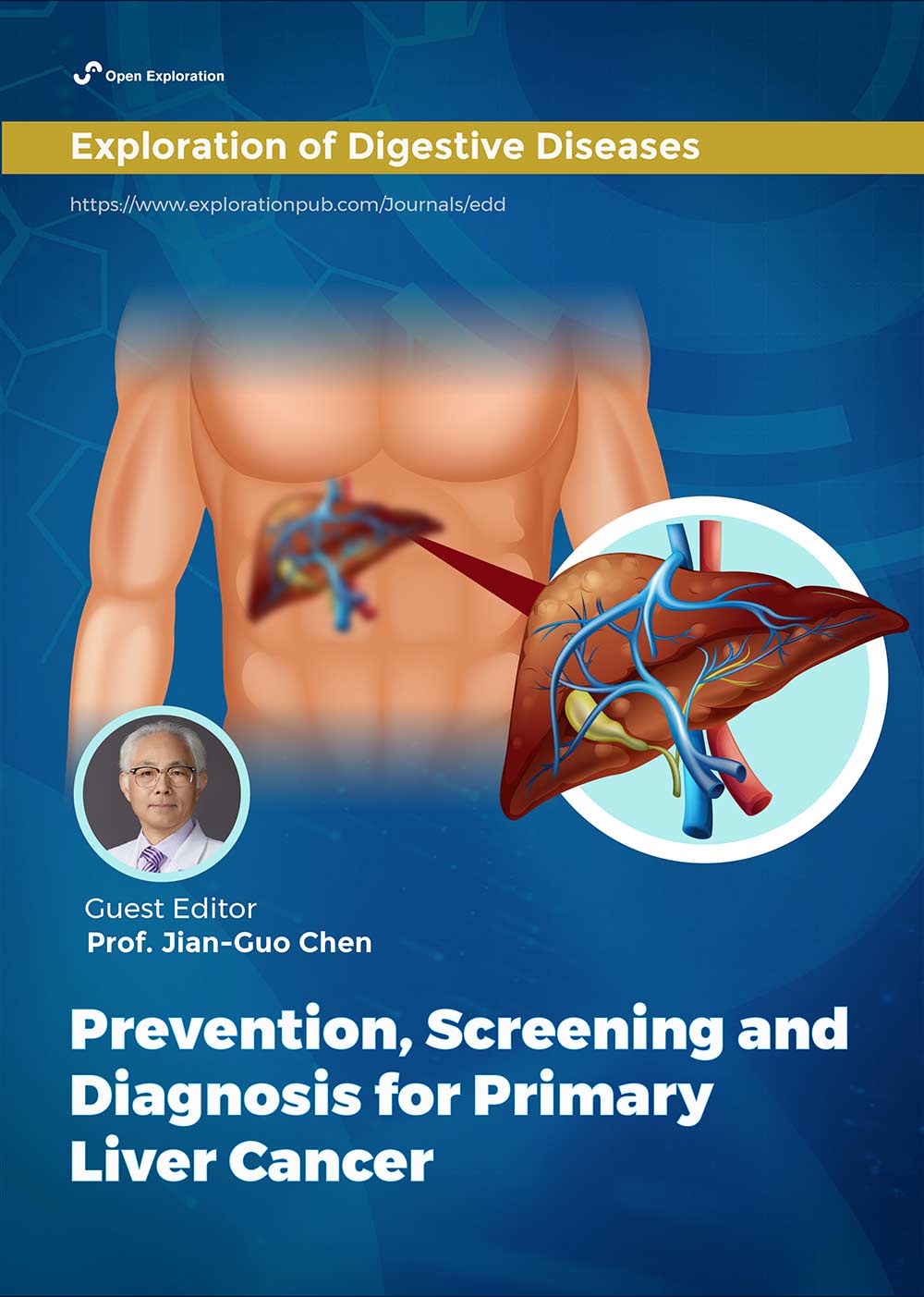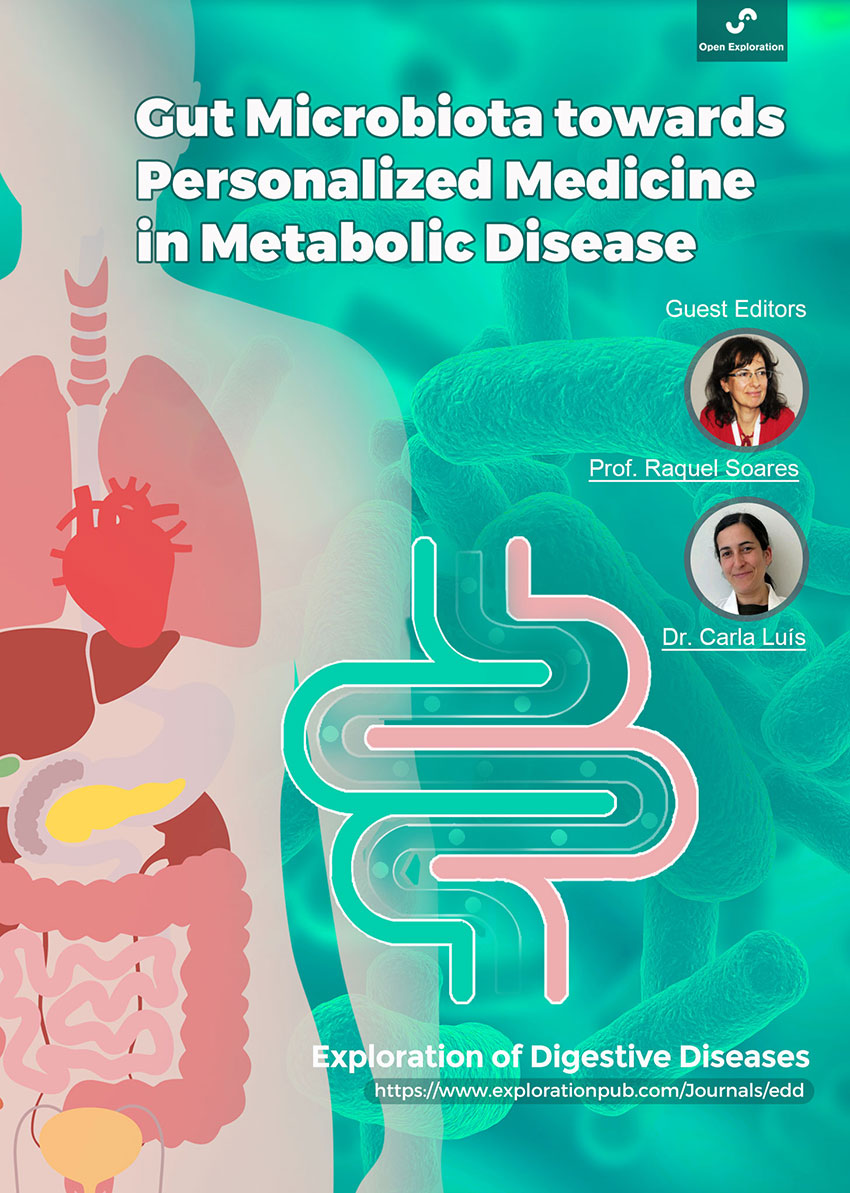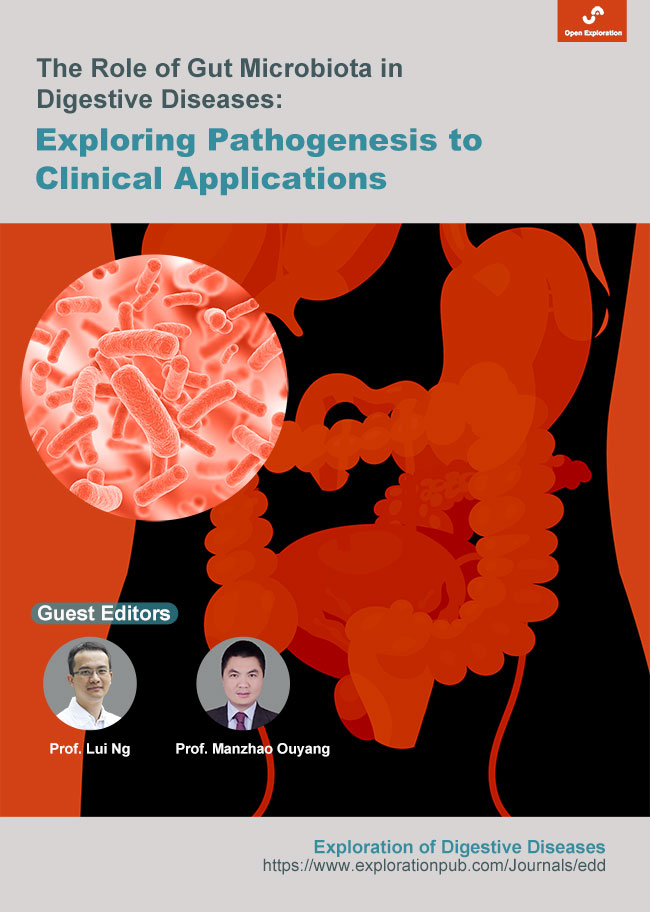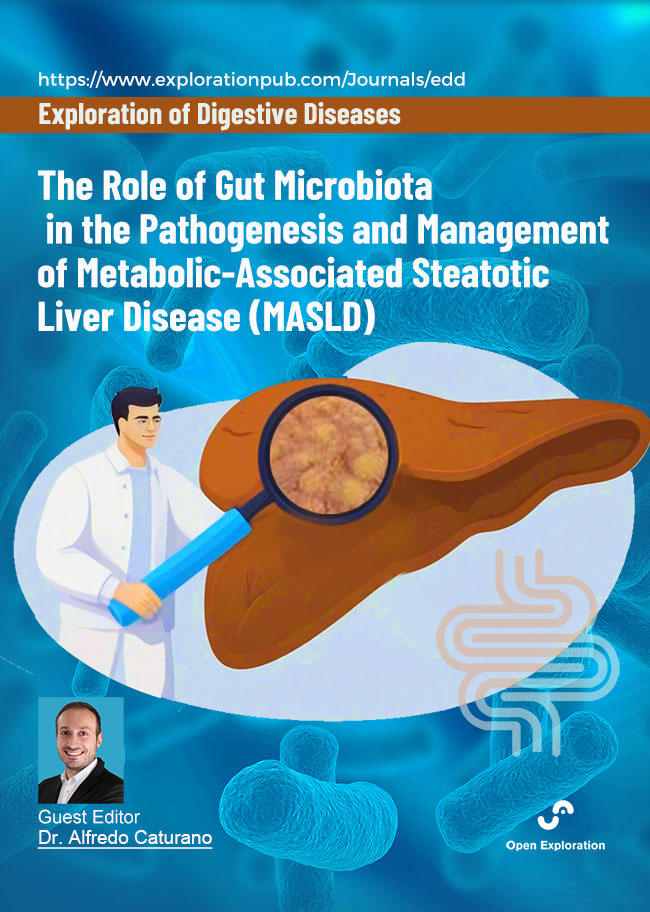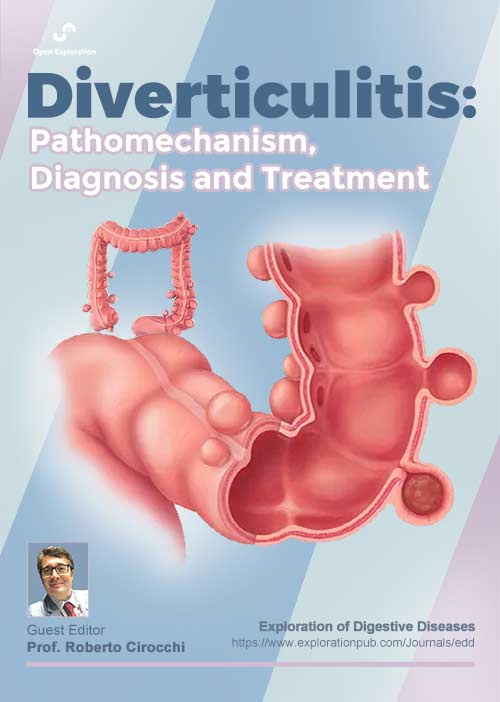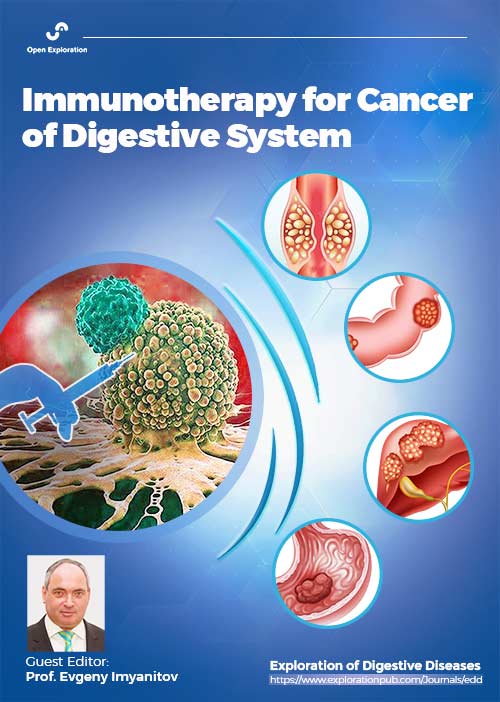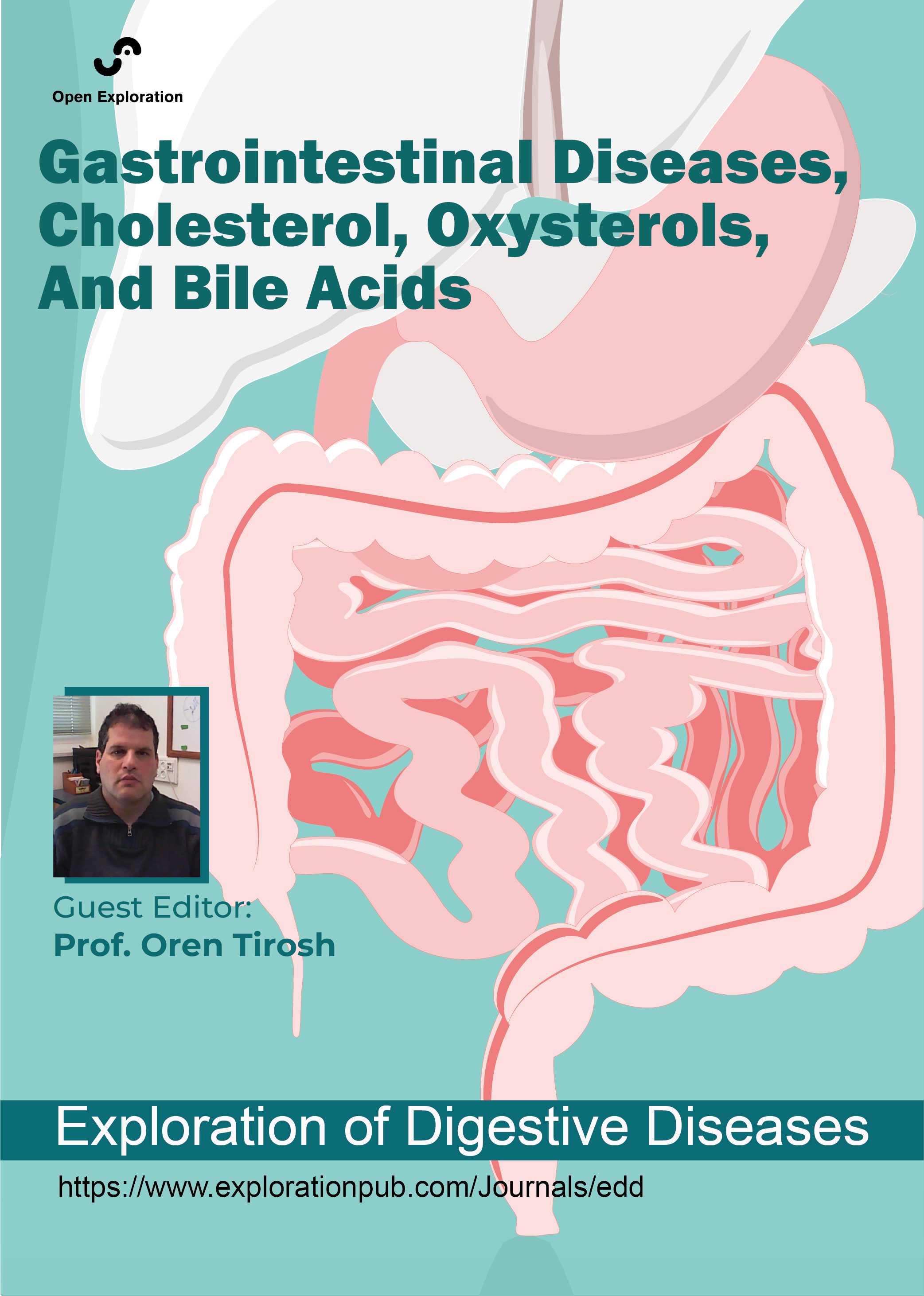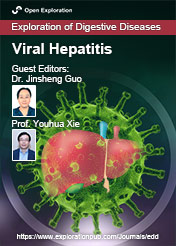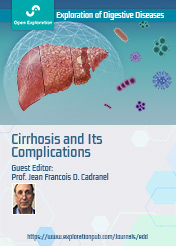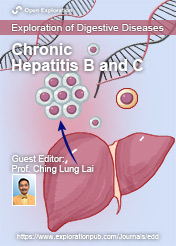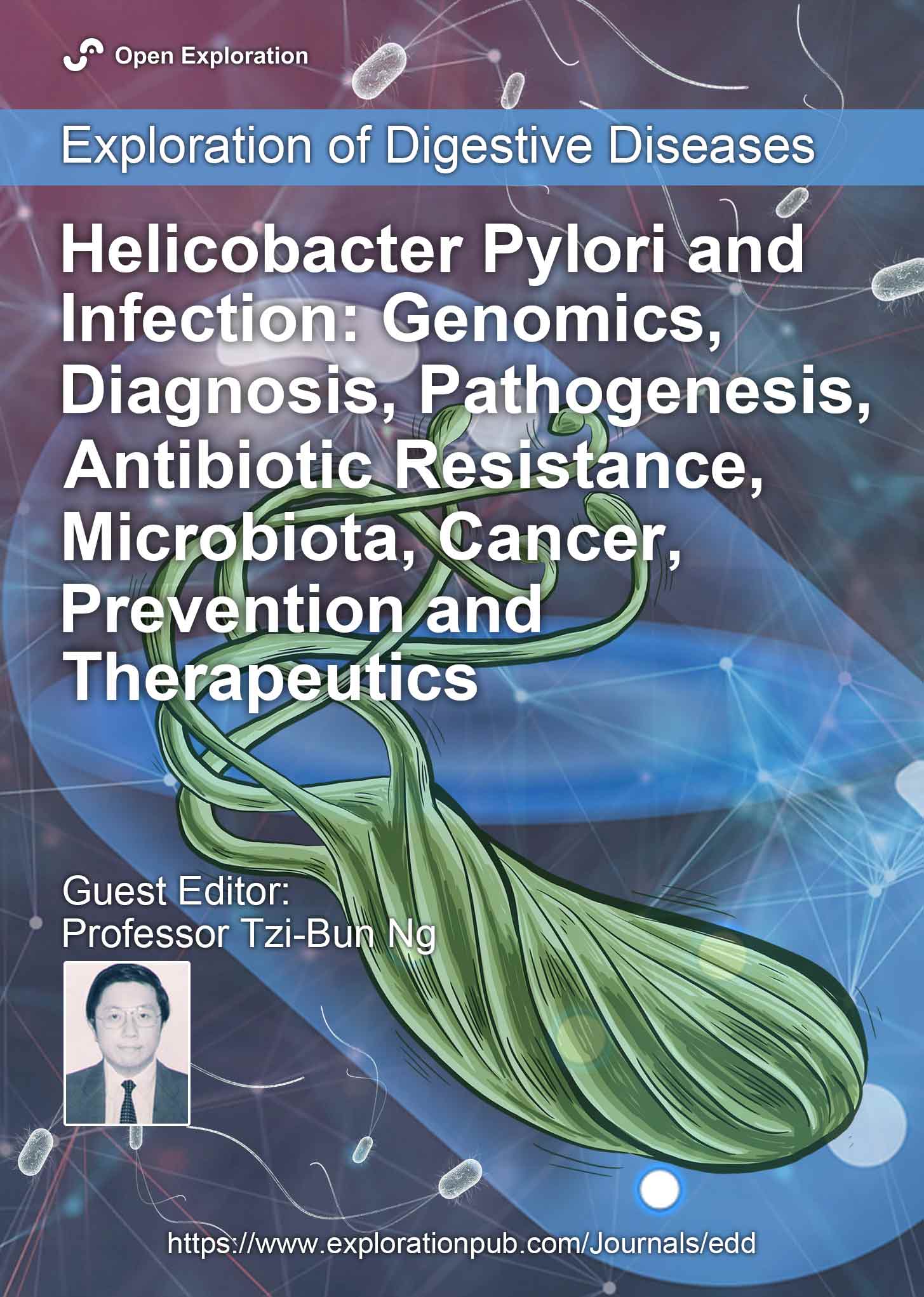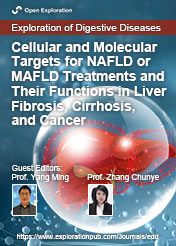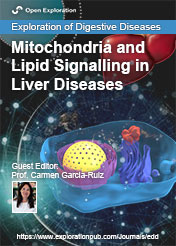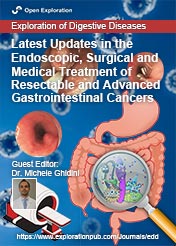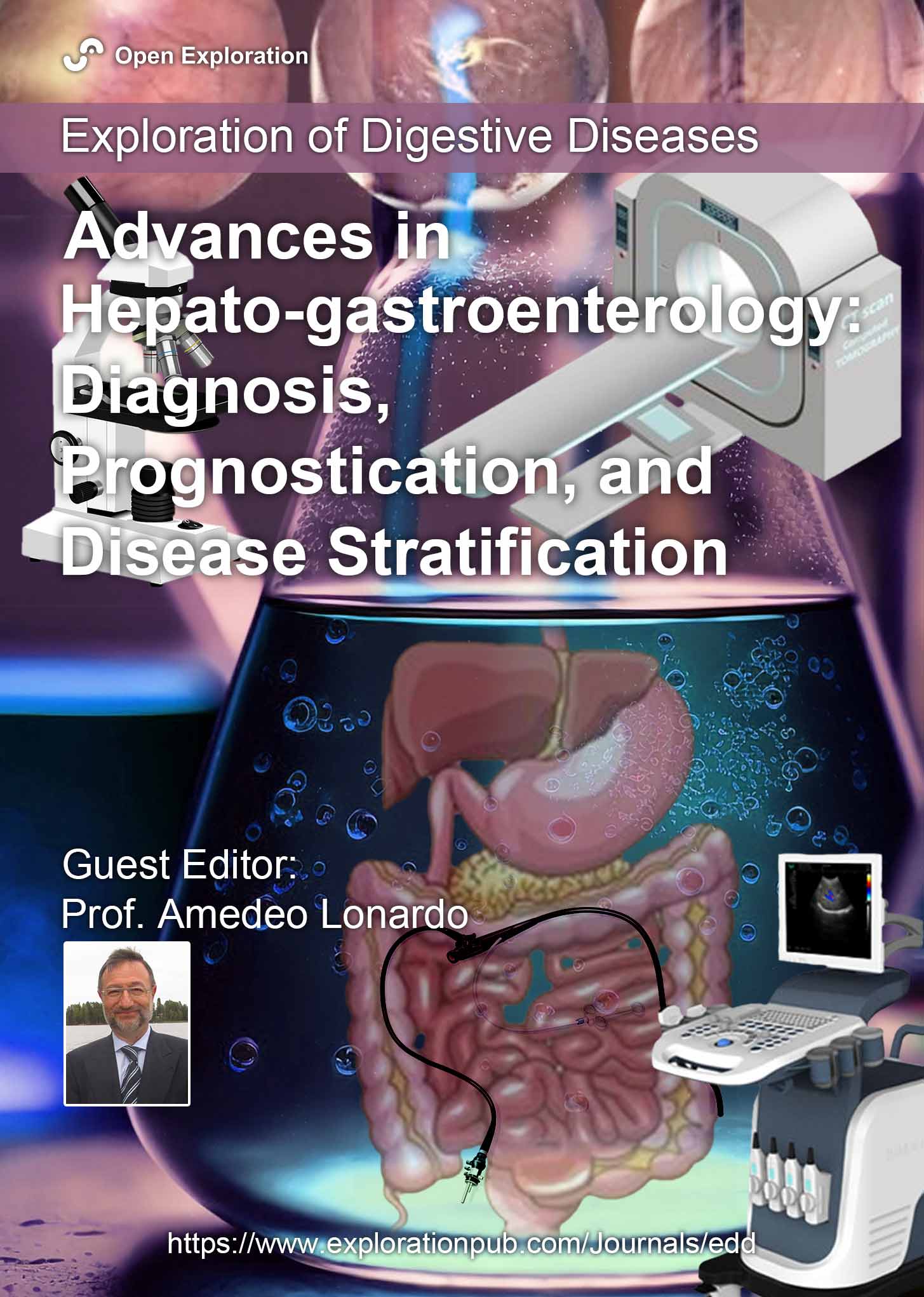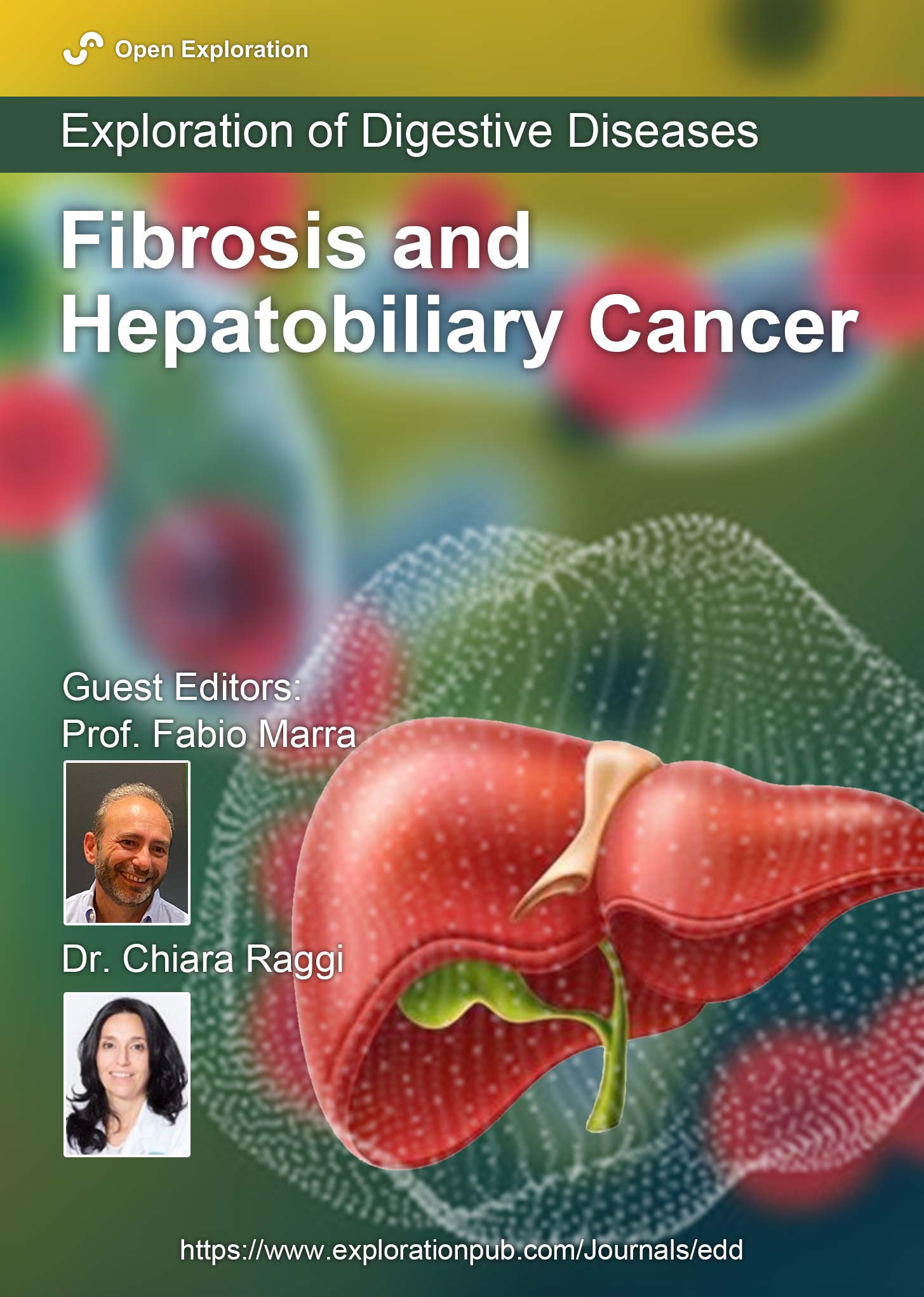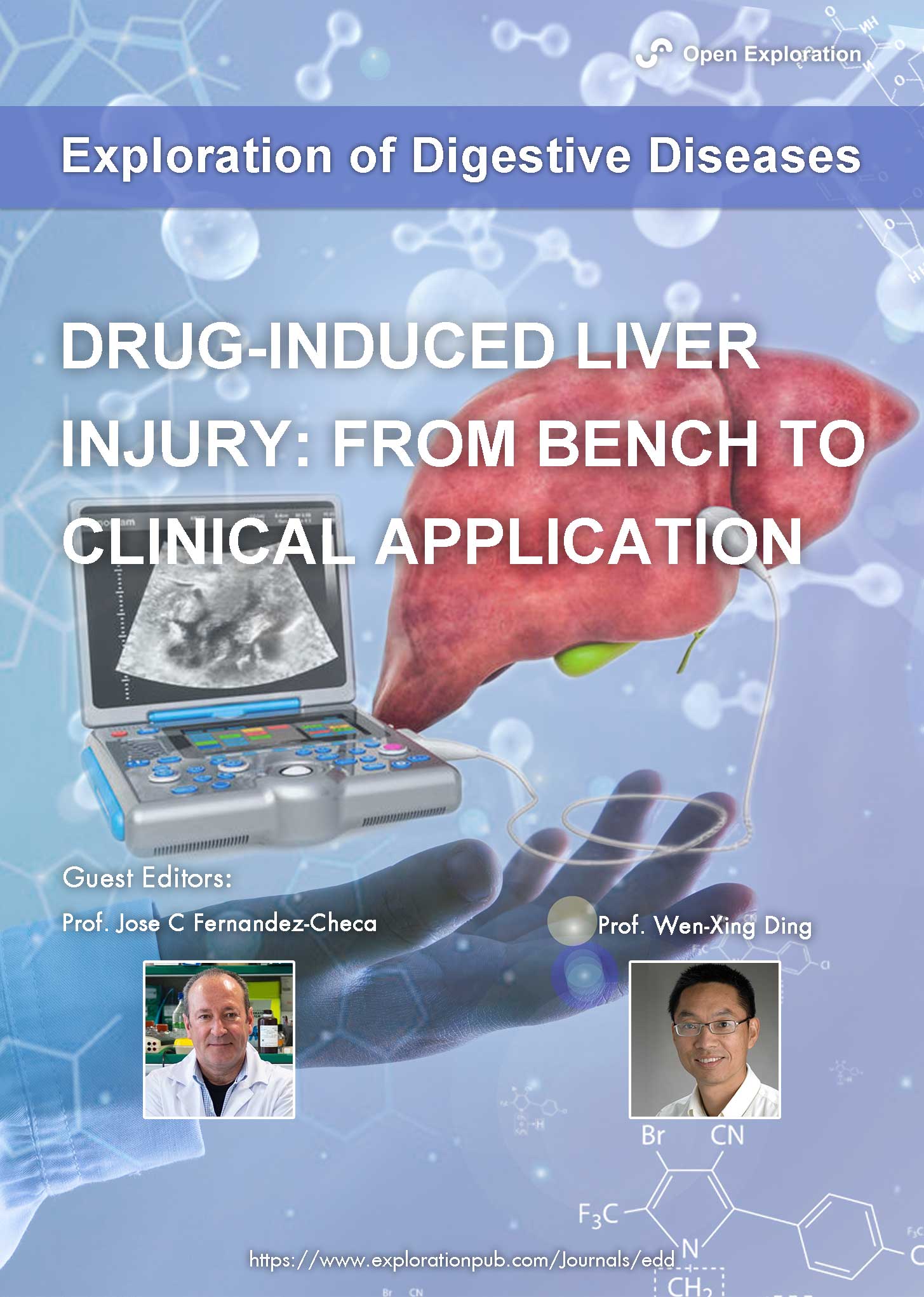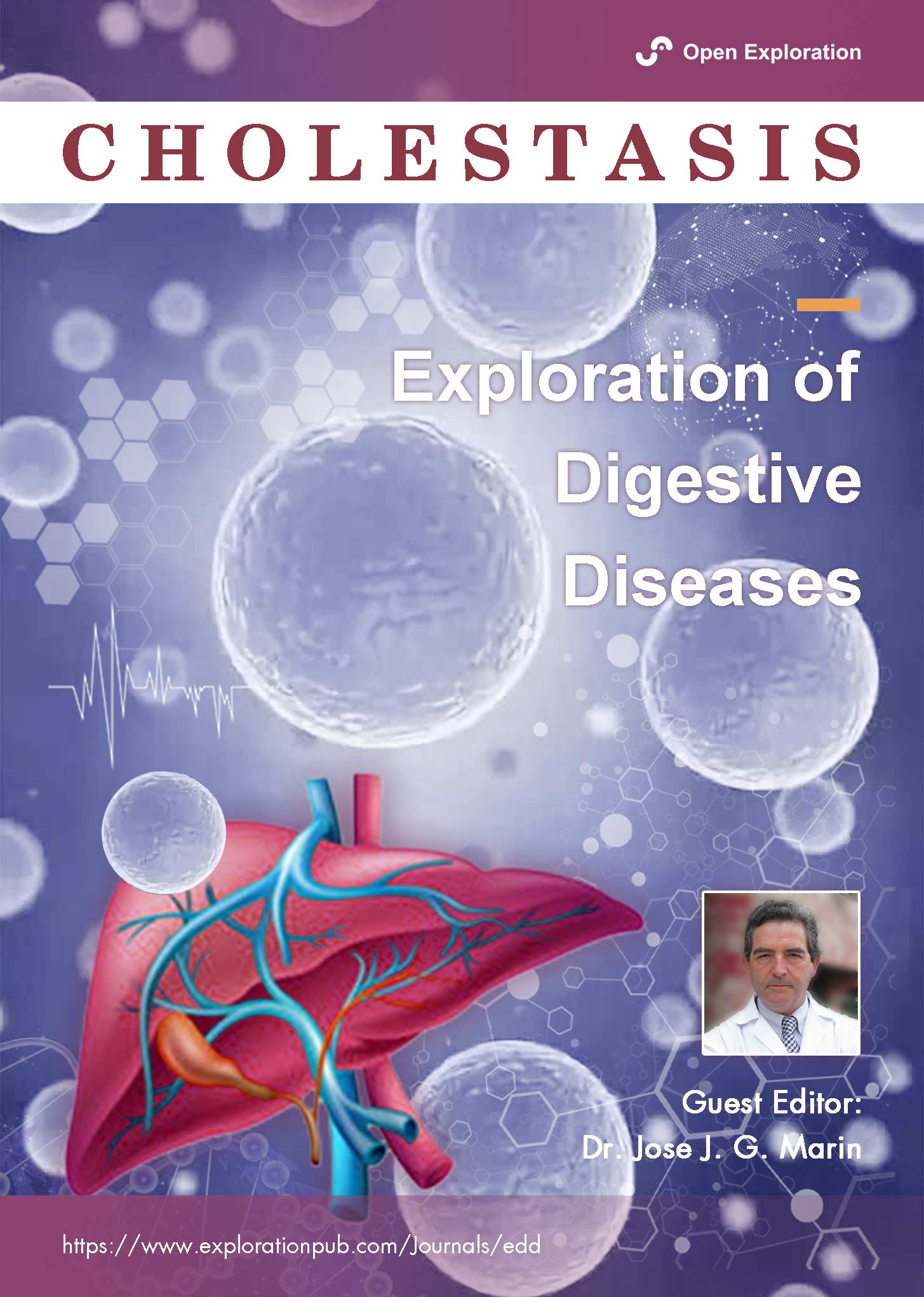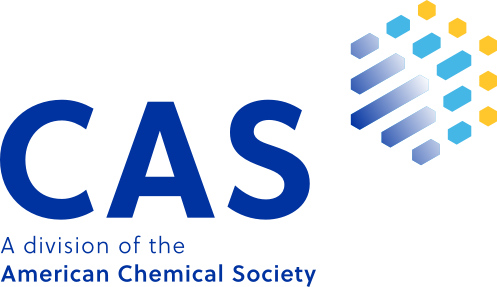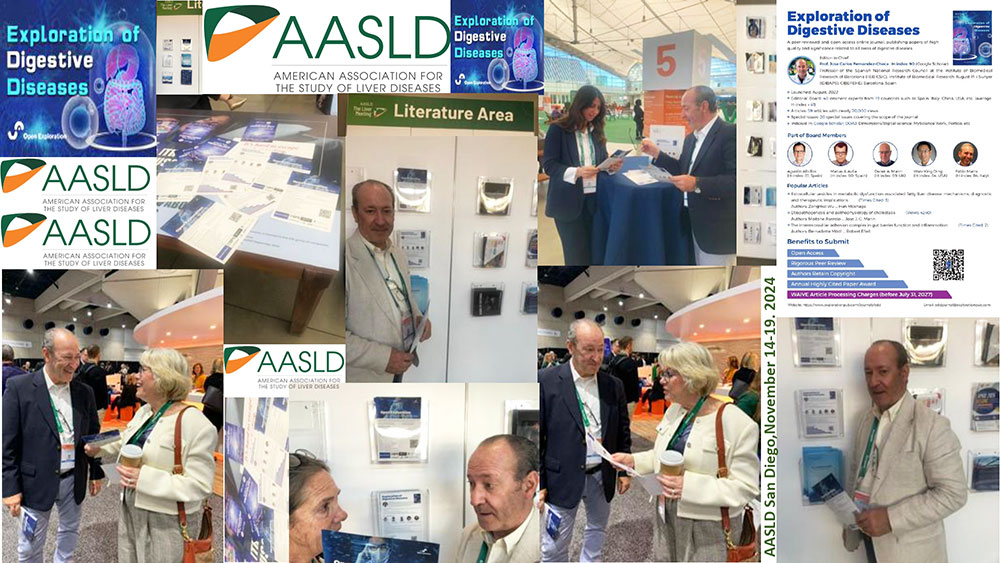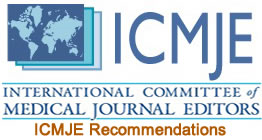-
Exploration of Digestive Diseases
eISSN: 2833-6321EiC: Jose C. Fernandez-Checa, SpainFrequency: Continuous PublicationAPC: No Article Processing Charge before July 31, 2027Publishing Model: Open AccessPeer Review Model: Single BlindPermanent Archive: PorticoIndexing & Archiving: Google Scholar, DOAJ, CAS, Dimensions, Portico, etc.Articles Fructose induces metabolic reprogramming in liver cancer cells, promoting aggressiveness and chemotherapy resistanceOpen AccessOriginal ArticleAim: Fructose is a highly lipogenic compound related to the onset of steatosis, its progression to steatohepatitis, and the eventual initiation of hepatocellular carcinoma (HCC). One of the cance [...] Read more.Lisette Chávez-Rodríguez ... Luis E. Gomez-QuirozPublished: April 20, 2025 Explor Dig Dis. 2025;4:100572
Fructose induces metabolic reprogramming in liver cancer cells, promoting aggressiveness and chemotherapy resistanceOpen AccessOriginal ArticleAim: Fructose is a highly lipogenic compound related to the onset of steatosis, its progression to steatohepatitis, and the eventual initiation of hepatocellular carcinoma (HCC). One of the cance [...] Read more.Lisette Chávez-Rodríguez ... Luis E. Gomez-QuirozPublished: April 20, 2025 Explor Dig Dis. 2025;4:100572
DOI: https://doi.org/10.37349/edd.2025.100572 Molecular insights into pancreatic cysts: navigating diagnosis and precision managementOpen AccessPerspectivePancreatic cystic lesions are frequently found incidentally on cross-sectional imaging and are broadly classified into mucinous and non-mucinous cysts. While some exhibit benign behavior, others hav [...] Read more.Rudy El Asmar ... Samer AlMasriPublished: April 13, 2025 Explor Dig Dis. 2025;4:100571
Molecular insights into pancreatic cysts: navigating diagnosis and precision managementOpen AccessPerspectivePancreatic cystic lesions are frequently found incidentally on cross-sectional imaging and are broadly classified into mucinous and non-mucinous cysts. While some exhibit benign behavior, others hav [...] Read more.Rudy El Asmar ... Samer AlMasriPublished: April 13, 2025 Explor Dig Dis. 2025;4:100571
DOI: https://doi.org/10.37349/edd.2025.100571
This article belongs to the special issue Advances in Hepato-gastroenterology: Diagnosis, Prognostication, and Disease Stratification Debugging surgical guidelines for acute diverticulitisOpen AccessPerspectiveDiverticular disease of the colon is a very important digestive disease and its management depends on the characteristics of the disease and the patient and the resources available. There are benefi [...] Read more.Valter Nilton FelixPublished: April 11, 2025 Explor Dig Dis. 2025;4:100570
Debugging surgical guidelines for acute diverticulitisOpen AccessPerspectiveDiverticular disease of the colon is a very important digestive disease and its management depends on the characteristics of the disease and the patient and the resources available. There are benefi [...] Read more.Valter Nilton FelixPublished: April 11, 2025 Explor Dig Dis. 2025;4:100570
DOI: https://doi.org/10.37349/edd.2025.100570
This article belongs to the special issue Diverticulitis: Pathomechanism, Diagnosis and Treatment The multiple mechanisms and modes of cell death after acetaminophen overdoseOpen AccessReviewAcetaminophen (APAP)-induced liver injury and acute liver failure is a significant clinical problem worldwide; in addition, APAP overdoses in animals or in cell culture are used as popular models to [...] Read more.Hartmut Jaeschke, Anup RamachandranPublished: April 07, 2025 Explor Dig Dis. 2025;4:100569
The multiple mechanisms and modes of cell death after acetaminophen overdoseOpen AccessReviewAcetaminophen (APAP)-induced liver injury and acute liver failure is a significant clinical problem worldwide; in addition, APAP overdoses in animals or in cell culture are used as popular models to [...] Read more.Hartmut Jaeschke, Anup RamachandranPublished: April 07, 2025 Explor Dig Dis. 2025;4:100569
DOI: https://doi.org/10.37349/edd.2025.100569 Immune checkpoint inhibitors in patients with advanced gastric cancer: a multi-institutional retrospective real-world studyOpen AccessOriginal ArticleAim: Selecting patients for immunotherapy in metastatic gastric cancer (mGC) in second and subsequent lines remains challenging. The aim of our study is to assess the feasibility of anti-programm [...] Read more.Anastasia Rays ... Аlexey TryakinPublished: March 27, 2025 Explor Dig Dis. 2025;4:100568
Immune checkpoint inhibitors in patients with advanced gastric cancer: a multi-institutional retrospective real-world studyOpen AccessOriginal ArticleAim: Selecting patients for immunotherapy in metastatic gastric cancer (mGC) in second and subsequent lines remains challenging. The aim of our study is to assess the feasibility of anti-programm [...] Read more.Anastasia Rays ... Аlexey TryakinPublished: March 27, 2025 Explor Dig Dis. 2025;4:100568
DOI: https://doi.org/10.37349/edd.2025.100568
This article belongs to the special issue Immunotherapy for Cancer of Digestive System Helicobacter pylori infection in the pathophysiology of metabolic dysfunction-associated steatotic liver disease and its complicationsOpen AccessLetter to the EditorJannis Kountouras ... Maria Tzitiridou-ChatzopoulouPublished: March 20, 2025 Explor Dig Dis. 2025;4:100567
Helicobacter pylori infection in the pathophysiology of metabolic dysfunction-associated steatotic liver disease and its complicationsOpen AccessLetter to the EditorJannis Kountouras ... Maria Tzitiridou-ChatzopoulouPublished: March 20, 2025 Explor Dig Dis. 2025;4:100567
DOI: https://doi.org/10.37349/edd.2025.100567Special Issues Gastrointestinal Cancer
Gastrointestinal CancerProf. Nahum Mendez-Sanchez
Submission Deadline: August 31, 2025
Published Articles: 0
 Prevention, Screening and Diagnosis for Primary Liver Cancer
Prevention, Screening and Diagnosis for Primary Liver CancerProf. Jian-Guo Chen
Submission Deadline: December 31, 2025
Published Articles: 0
 Gut Microbiota towards Personalized Medicine in Metabolic Disease
Gut Microbiota towards Personalized Medicine in Metabolic DiseaseProf. Raquel Soares Dr. Carla Luís
Submission Deadline: June 30, 2025
Published Articles: 0
 The Role of Gut Microbiota in Digestive Diseases: Exploring Pathogenesis to Clinical Applications
The Role of Gut Microbiota in Digestive Diseases: Exploring Pathogenesis to Clinical ApplicationsProf. Lui Ng Prof. Manzhao Ouyang
Submission Deadline: October 31, 2025
Published Articles: 0
 The Role of Gut Microbiota in the Pathogenesis and Management of Metabolic-Associated Steatotic Liver Disease (MASLD)
The Role of Gut Microbiota in the Pathogenesis and Management of Metabolic-Associated Steatotic Liver Disease (MASLD)Dr. Alfredo Caturano
Submission Deadline: October 31, 2025
Published Articles: 0
 Diverticulitis: Pathomechanism, Diagnosis and Treatment
Diverticulitis: Pathomechanism, Diagnosis and TreatmentProf. Roberto Cirocchi
Submission Deadline: October 31, 2025
Published Articles: 1
 Immunotherapy for Cancer of Digestive System
Immunotherapy for Cancer of Digestive SystemProf. Evgeny Imyanitov
Submission Deadline: October 31, 2025
Published Articles: 2
 Gastrointestinal Diseases, Cholesterol, Oxysterols, and Bile Acids
Gastrointestinal Diseases, Cholesterol, Oxysterols, and Bile AcidsProf. Oren Tirosh
Submission Deadline: December 31, 2024
Published Articles: 0
 Viral Hepatitis
Viral HepatitisDr. Jinsheng Guo Prof. Youhua Xie
Submission Deadline: October 31, 2025
Published Articles: 4
 Cirrhosis and Its Complications
Cirrhosis and Its ComplicationsProf. Jean Francois D. Cadranel
Submission Deadline: August 31, 2025
Published Articles: 4
 Chronic Hepatitis B and C
Chronic Hepatitis B and CProf. Ching Lung Lai
Submission Deadline: August 31, 2025
Published Articles: 2
 Helicobacter Pylori and Infection: Genomics, Diagnosis, Pathogenesis, Antibiotic Resistance, Microbiota, Cancer, Prevention and Therapeutics
Helicobacter Pylori and Infection: Genomics, Diagnosis, Pathogenesis, Antibiotic Resistance, Microbiota, Cancer, Prevention and TherapeuticsProf. Tzi-Bun Ng
Submission Deadline: October 31, 2025
Published Articles: 4
 Cellular and Molecular Targets for NAFLD or MAFLD Treatments and Their Functions in Liver Fibrosis, Cirrhosis, and Cancer
Cellular and Molecular Targets for NAFLD or MAFLD Treatments and Their Functions in Liver Fibrosis, Cirrhosis, and CancerProf. Ming Yang Prof. Chunye Zhang
Submission Deadline: January 31, 2025
Published Articles: 4
 Mitochondria and Lipid Signalling in Liver Diseases
Mitochondria and Lipid Signalling in Liver DiseasesProf. Carmen Garcia-Ruiz
Submission Deadline: May 30, 2025
Published Articles: 6
 Latest Updates in the Endoscopic, Surgical and Medical Treatment of Resectable and Advanced Gastrointestinal Cancers
Latest Updates in the Endoscopic, Surgical and Medical Treatment of Resectable and Advanced Gastrointestinal CancersDr. Michele Ghidini
Submission Deadline: October 31, 2025
Published Articles: 1
 Advances in Hepato-gastroenterology: Diagnosis, Prognostication, and Disease Stratification
Advances in Hepato-gastroenterology: Diagnosis, Prognostication, and Disease StratificationProf. Amedeo Lonardo
Submission Deadline: October 31, 2025
Published Articles: 4
 Fibrosis and Hepatobiliary Cancer
Fibrosis and Hepatobiliary CancerProf. Fabio Marra Dr. Chiara Raggi
Submission Deadline: March 31, 2025
Published Articles: 3
From the Editor-in-Chief "It is a great pleasure to serve as the newly appointed Editor-in-Chief of Exploration of Digestive Diseases (EDD). The journal will be a powerful platform for the publication and dissemination of cutting edge science and will devote to increase the knowledge of digestive diseases." said Prof. Fernandez-Checa. "Translational research and clinical perspectives on liver, biliary, digestive tract and pancreatic diseases will pave the way for improving diagnosis and treatment. With the guidelines of Open Exploration Publishing services, the new EDD journal seeks to become a reference in discovery and education in digestive diseases."Jose C. Fernandez-Checa
"It is a great pleasure to serve as the newly appointed Editor-in-Chief of Exploration of Digestive Diseases (EDD). The journal will be a powerful platform for the publication and dissemination of cutting edge science and will devote to increase the knowledge of digestive diseases." said Prof. Fernandez-Checa. "Translational research and clinical perspectives on liver, biliary, digestive tract and pancreatic diseases will pave the way for improving diagnosis and treatment. With the guidelines of Open Exploration Publishing services, the new EDD journal seeks to become a reference in discovery and education in digestive diseases."Jose C. Fernandez-Checa
Editor-in-Chief of Exploration of Digestive Diseases -
-
NewsletterExploration of Digestive Diseases accepted for CAS
 Feb. 24, 2025EDD at the 75th Annual Liver Meeting of the American Association for the Study of Liver Diseases (AASLD TLM2024)
Feb. 24, 2025EDD at the 75th Annual Liver Meeting of the American Association for the Study of Liver Diseases (AASLD TLM2024) Dec. 17, 2024EDD is now indexed in DOAJ
Dec. 17, 2024EDD is now indexed in DOAJ Apr. 17, 2023MoreEDD listed in "Journals stating that they follow the ICMJE Recommendations"
Apr. 17, 2023MoreEDD listed in "Journals stating that they follow the ICMJE Recommendations" Oct. 8, 2022
Oct. 8, 2022 -
Selected Special IssuesTopic: Viral Hepatitis Topic: Cirrhosis and Its Complications Topic: Chronic Hepatitis B and C Topic: Latest Updates in the Endoscopic, Surgical and Medical Treatment of Resectable and Advanced Gastrointestinal Cancers Topic: Advances in Hepato-gastroenterology: Diagnosis, Prognostication, and Disease Stratification More
-
Articles Available in PMCPapers supported by NIH (or other funding bodies) are encouraged to be deposited in PMC.
